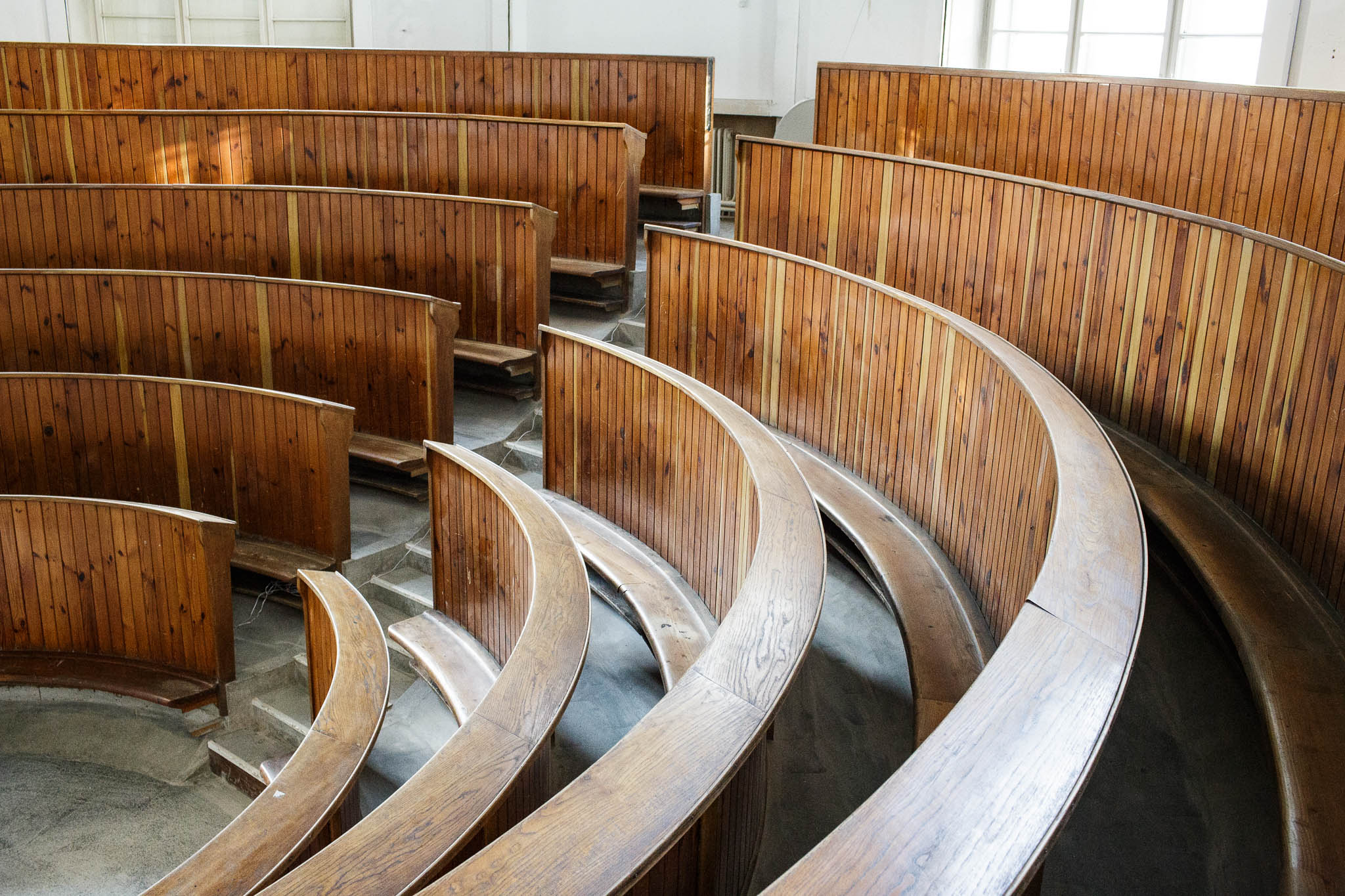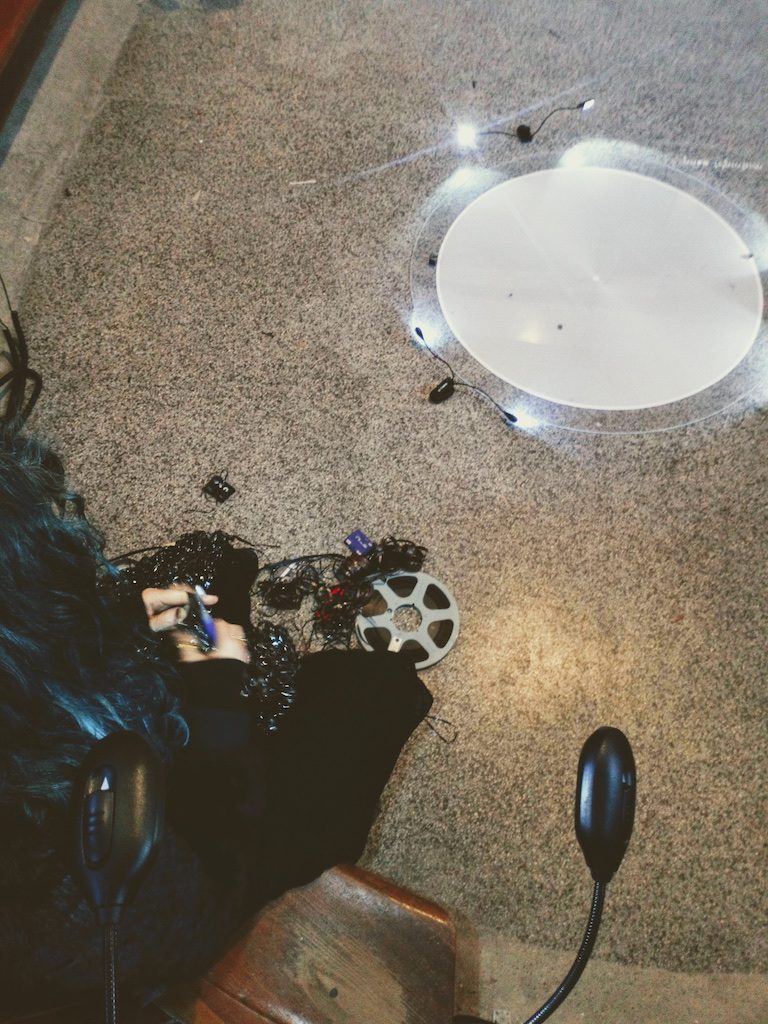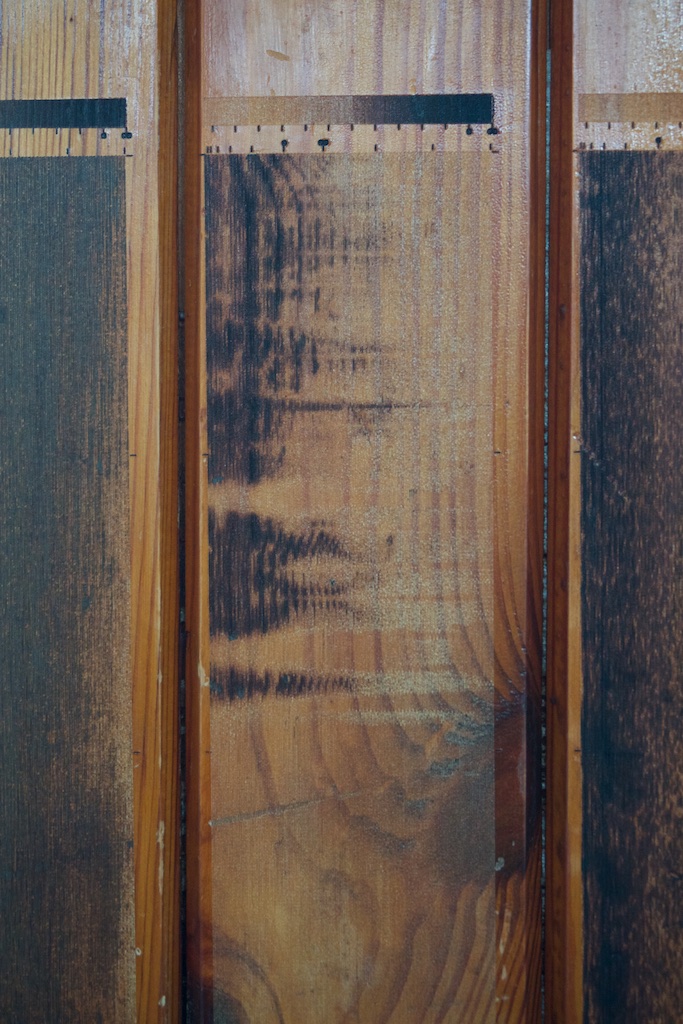Search Results for: auditorium
Auditorium of Rotting sounds, open 12.11. 15:30-18:00
On the occasion of the Wien Modern festival‘s event Einschreibung, Übertragung, Abtragung (Inscription, Transmission, Erosion) taking place at the mdw Future Art Lab building, we will open the Auditorium of Rotting sounds, the sound art exhibition of the artistic research project rotting sounds, in the afternoon prior to the concert.
The following time slots are available for a maximum of 10 visitors each: 3:30 pm, 4:00 pm, 4:30 pm, 5:00 pm, 5:30 pm.
Please register with auditorium@rottingsounds.org stating your preferred time slot.
Auditorium Archive

Performances at the Auditorium: “Fragments”, October 2
The performance evening will revolve around Tobias Leibetseder‘s processual and constantly changing sculpture “Fragments“. It is in permanent development and consists of artifacts of the Rotting sounds research process. Waste, things collected, things stored and put aside, texts, pictures, data, sounds etc. are the basis of the shape-changing work. Object or exhibition, museum or archive, collection or documentation are moments of intrinsic research and decomposition, accompanying the process and resting in the distant but immediate eye of the observer.
Tobias Leibetseder‘s performance Transformation 1 is a transformation step and insight into the process of fragments. Artifacts as materials and sounds are transformed into new shapes and synthesized in a performative and concert act.
Angélica Castelló will present a performance based on recordings of her performance “Magnetic litany” from the opening evening of the Auditorium of Rotting sounds on March 29, 2019. It is connected to the permanently exhibited object “Magnetic Room“.
Elisabeth Flunger and Thomas Grill will jointly improvise on material and digital scrap. Everything seemingly valuable today will eventually transform into scraps. We take it as an aesthetic option.
October 2, 2019 19:00
Auditorium of Rotting sounds (Altes Auditorium)
University of Music and Performing Arts Vienna
Anton-von-Webern-Platz 1, 1030 Wien
As the audience will have to be limited, admission is on personal registration only.


The pieces Magnetic litany 1 and 2 by Angélica Castelló have been made possible by the support of El Sistema Nacional de Creadores de Arte (FONCA).

Auditorium of Rotting sounds summer break
Due to the summer break at the University of Performing Arts Vienna, we suspend our regular opening times through July and August. Visiting the Auditorium is still possible by individual appointment, though.


Opening of the Auditorium of rotting sounds, March 29, 6pm
Program:
Reinhold Friedl: Die Suche nach dem Original: vom Verfall elektroakustischer Musik – lecture
Klaus Filip: Sonic Dust – opto-acoustic performance
Till Bovermann: Buffer manipulations – live coding performance
Mario de Vega: Suspension – for quadraphonic system, tape, objects and self-made electronics
at the Bankettsaal of the University of Music and Performing Arts Vienna
Anton-von-Webern-Platz 1, 1030 Wien, Austria
The Auditorium is open after 7pm with the following works on display:
Angélica Castelló: Magnetic Room – objects and sound installation
Klaus Filip: Dust a bit – opto-acoustic installation
Juliana Herrero and Thomas Grill: Antenna – sounding object
Martin Howse: Enrichment and depletion – installation
Nicole Krenn and Thomas Grill: Fields of Haze – audiovisual installation
Tobias Leibetseder: Fragments – installation
Mario de Vega: Intermission – sounding object
Till Bovermann and Almut Schilling: CD-R(ot) – sound installation
… and other works and experimental setups of the project team Thomas Grill, Till Bovermann and Almut Schilling.
Live events in the Auditorium during the opening:
Angélica Castelló: Magnetic litany – Performance
Charlotta Ruth: Intervention
Dario Sanfilippo: Phase transitions – Multi-channel electroacoustic performance
For a visit of the auditorium at the opening a personal registration is absolutely recommended!
Workshop with Martin Howse and Till Bovermann on circulation/corruption:
28.3., 10:00 to 17:30 and 29.3., 09:30 to 13:00
at the Senatssitzungsraum (AW L0123) and the whole campus.
The rotting sounds project is a cooperation between the University of Music and Performing Arts Vienna, the University of Applied Arts Vienna and the Academy of Fine Arts Vienna, funded by the Austrian Science Fund (FWF).
Auditorium of rotting sounds
Our research project is physically located at the main campus of the University of Music and Performing Arts Vienna, in the only unrestored building which used to be an auditorium of the former School for Veterinary Medicine.

Address: Altes Auditorium, Anton von Webern Platz 1, 1030 Wien.
The building is the northern half-round element on the back side of building S on the campus.
We run our own project-related experiments with sound and media in this room, but it is also a publicly accessible listening space. We integrate external artistic positions which are related to our research agenda, that is, working with digital sound and time-dependency.
Conceptually, we refer to the legendary Mold museum (Schimmelmuseum) by artist Dieter Roth. Roth is well-known for his works with (bio-)degradable art and established his Schimmelmuseum in 1992 both as a workplace and a museum for the produced works.
Currently, the following works are on display:
- Juliana Herrero and Thomas Grill: Antenna – sound installation
- Almut Schilling: The Carrier – experimental system
- Till Bovermann and Almut Schilling: CD-R(ot) – sound installation
- Klaus Filip: Dust a bit – opto-acoustic installation
- Martin Howse: Enrichment and depletion – installation
- Nicole Krenn and Thomas Grill: Fields of Haze – audiovisual installation
- Hannes Köcher and Thomas Grill: Inscriptions from the Archive – processual installation
- Mario de Vega: Intermission – sounding object
- Tobias Leibetseder: Fragments – installation
- Angélica Castelló: Magnetic Room – objects and sound installation
- Thomas Grill: Midnight song – sound object
- Dario Sanfilippo: Phase transitions – sound installation
Currently exhibited at ESC Medienkunstlabor in Graz, Austria:
- Thomas Grill: Mutual understanding – sound installation
Details about the space, the works and the artists can be found in our exhibition catalog.

Due to the COVID-19 restrictions, the Auditorium can currently one be visited upon individual appointment.
Digital Audio Deterioration Artifacts (DADA) Toolkit
Marije Baalman aka nescivi designed the Digital Audio Deterioration Artifacts (DADA) Toolkit board specifically for the Rotting sounds project, above all for experiments in the 1-bit audio domain.

The board is based on an STM32F407VG MCU with many of the MCU’s pins broken out for our experimental use cases.
We have used the board successfully for the digital version of the dust a bit installation, running over many months in the Auditorium of Rotting Sounds.
Research Day 2021, Academy of Fine Arts, November 11
Almut Schilling will hold a lecture at the Research Day 2021, titled “Auditorium of Rotting Sounds: Maintaining Digital Decay”
At the beginning of the artistic research project we manifested that data degrade inevitable and we do perceive decay as transformation. With the establishment of the Auditorium of Rotting Sounds an extraordinary space, dedicated to site specific artworks, was created, to let the sound objects rot.
But how to control the temporal transformation of digital data, which basically are inherent dynamic systems? How to classify determinants and the symptoms of decay and its effects? And how to understand and perceive those created aesthetics?
Considering the difference between things (physical entities defined by its material properties) and objects (conceptual entities generated and perceived by semantically thinking) it is fundamental to ensure a certain legibility within the flow of time, which means to prevent that those entities are drifting too far apart. Consequently the maintenance, the controlled ›aging‹, appeared to reflect the individual artwork conceptually and its growing patina.
11.11.2021, 10:00–17:45
Akademie der bildenden Künste Wien, Schillerplatz 3, 1010 Wien, Sitzungssaal
Rotting sounds symposium, September 23+24
Since 2018, the project of artistic research Rotting sounds – Embracing the temporal deterioration of digital audio has been researching transformation processes pertaining to the diverse interrelations of digitally encoded information in the audio domain, its material properties and (human) interpretation within a sociocultural context. This symposium provided a room for reflection on the acquired experiences in the course of the project, to bring in external viewpoints on the relevant topics and stimulate outlooks beyond the limits of current research.
Rotting sounds is a cooperation between the University of Music and Performing Arts Vienna, the University of Applied Arts Vienna and the Academy of Fine Arts Vienna and is funded by the Austria science fund (FWF project AR445).
mdw – University of Music and Performing Arts Vienna
Anton-von-Webern Platz 1
1030 Wien, Austria

Thursday, September 23rd, 19:00-22:00
@ Klangtheater (Building V, Future Art Lab, mdw campus)
LIVE PERFORMANCES:
19:00 Till Bovermann, Dario Sanfilippo, Martin Howse, Kathrin Hunze
20:15 Castelló/Noetinger
21:00 Jasmine Guffond
Friday, September 24th, 10:00-18:00
@ Klangtheater (Building V, Future Art Lab, mdw campus)
KEYNOTES and TALKS:
10:00 Keynote by Martin Kunze
11:00 Introduction to the Rotting Sounds project by Thomas Grill, Almut Schilling and Till Bovermann
12:15 Presentation by Martin Howse
12:45 Presentation by Julian Rohrhuber (online)
13:15 — break —
14:15 Keynote by Carolin Bohlmann
15:15 Presentation by Jasmine Guffond
15:45 Presentation by Rosa Menkman (online)
16:30 Panel Discussion with Carolin Bohlmann, Angélica Castelló, Martin Howse, Martin Kunze and Almut Schilling
Friday, September 24th, 19:30-22:00
@ Klangtheater (Building V, Future Art Lab, mdw campus)
The Auditorium of Rotting Sounds can be visited through guided tours.
LIVE PERFORMANCES:
19:30 Mario de Vega
20:15 Tobias Leibetseder / Georg Zichy

Partners:
FWF Der Wissenschaftsfonds
mdw – Universität für Musik und darstellende Kunst Wien
Universität für angewandte Kunst Wien
Akademie der bildenden Künste Wien
co-curated and produced by sound:frame



Inscriptions from the archive
by Hannes Köcher and Thomas Grill, 2020
commissioned by rotting sounds
Sound archive, wooden seat rows, laser engraving machine
The archive of the auditorium of rotting sounds is continuously growing. Every hour, each of the sounding exhibits in the space leaves one minute of audio data in the archive, already amounting to tens of thousands of sound items.
This installation inscribes these sounds into the exhibition space itself, laser engraving time-frequency representations into the wooden seat rows. Each of the about 1000 seatback planks can carry 10 seconds of sound which – in principle – can be reconstructed at a later time.
The machine works autonomously, taking a few hours per plank. By the end of the year 2021, all the seat rows will be filled with a representative random selection of archived sound items.







